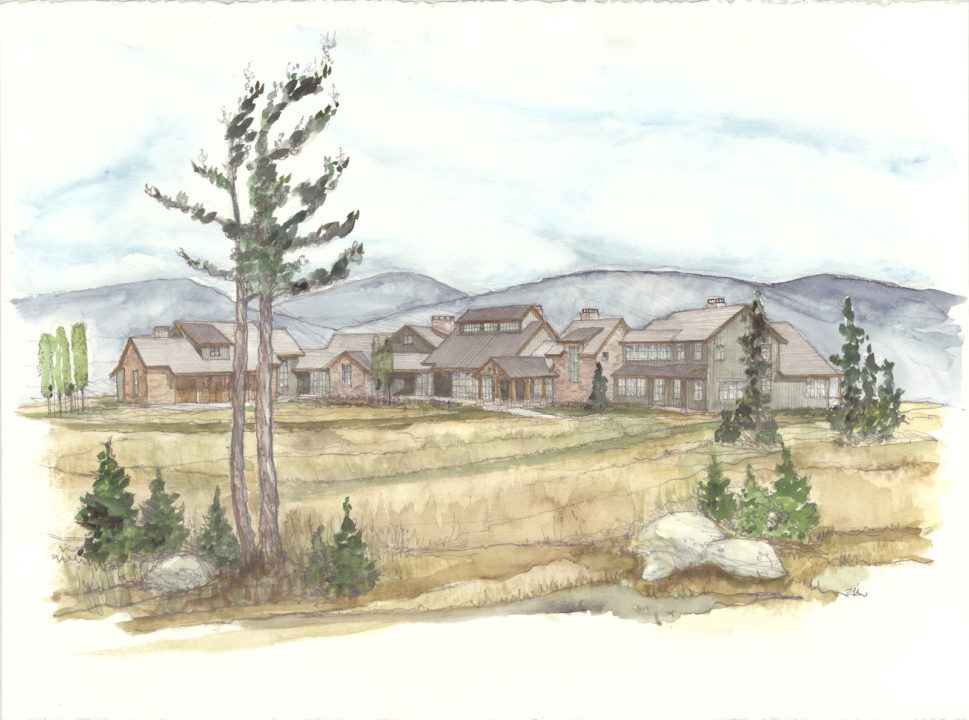The Local newsletter is your free, daily guide to life in Colorado. For locals, by locals.
Denver’s housing market has been heating up this summer, with June posting a record-high number of homes under contract in one month. But amidst all the flurry, the spread of COVID-19 is prompting some house-hunters to consider trading their city homes for rural properties with a bit more breathing room. For those looking to gain lots of space without sacrificing creature comforts, the 6,500-acre Devil’s Thumb Ranch resort and spa in Tabernash has an enticing option: the Ranches, a new 550-acre enclave of 24 custom-home building sites ranging in size from 11 to 35 acres and priced from $750,000, with a minimum home size of 3,000 square feet.
The Ranches might be the perfect solution for those who have dreamed of the ranch lifestyle—without all the ranch chores. Nestled into the high country—75 miles west of Denver and within easy reach of Winter Park, Lake Granby, Grand Lake, and Rocky Mountain National Park—Devil’s Thumb Ranch was recently named one of Travel + Leisure magazine’s top 25 family resorts in the United States. Surrounded by the Arapahoe National Forest and James Peak and Indian Peaks Wilderness preserves, there’s plenty of room to breathe free.

Residents can opt for a membership providing full access to resort amenities plus exclusive homeowner perks, including restaurant dining, riding stables, a spa and pool, cross-country skiing (with 75 miles of private trails), fly-fishing (along with access to the Hatch, a residents-only fishing cabin), mountain biking, yoga, shuttles, housekeeping, concierge services, and the Cowpoke Camp for kids.
“Our current situation reinforces the need for a healthy lifestyle, access to the outdoors, and great recreation opportunities, along with a need for more space and privacy than what is provided in most urban locations,” says Rob Cyman, president of the Ranches at Devil’s Thumb. “I’m in discussions with families who want to relocate and have this be their primary residence, and others who want this to be a second residence, a legacy property where their extended family can gather for many years to come. They can choose to remain in their residence and enjoy that privacy and the beauty of the setting, or, because they have the resort next door, they can choose to be as social as they desire.”
Prospective homeowners can also choose their own architect and builder for a custom plan (subject to approval by a design committee), or consider one of the Ranches’ spec homes. The first two of those have been designed by architect Eric Mandil, of Denver-based design firm Mandil Inc., and are expected to be finished by autumn 2021.
The two homes—named the Homestead and Ranch Collina—demonstrate different twists on the ranch lifestyle. Mandil describes the Homestead’s style as “an elegant barn with rustic overtones,” crafted from tailored timber and stone. It features a large, vaulted great room flanked by two wings spreading out on either side. There are two master suites, a bunk room, wine bar, dining room with 24-guest capacity, home office space, three fireplaces plus a potbelly stove, a three-car garage, and ample storage for skis and outdoor toys. The pet-friendly home also includes a dog-washing room, kennel, and exterior dog run. Half of the 5,880-square-foot floor plan can easily be closed off, making it ideal for one or two couples or an extended family.
The other Mandil-designed spec home, Ranch Collina, will be sleeker and smaller, in more of a mountain-modern spirit, with interiors by Sue Steffen of Steffen Design Consulting.
“What we were trying to do is create a new concept of ranch that was truly Colorado—more down to earth, more part of that valley—that wasn’t pretentious, but it was indigenous, and quiet, and felt more regional,” Mandil explains. “Individual units can be different, but they all develop into something that feels cohesive.”
With wide-open spaces and work-from-home options, the fledgling community strikes a together-yet-apart balance that’s especially appealing right now. “The Ranches offers unparalleled views, privacy, and access to the resort next door,” Cyman says. “Homeowners will feel a strong connection to the natural environment, removed from a dense development or urban area, but still have access to all the amenities that will make them comfortable in their home.”















